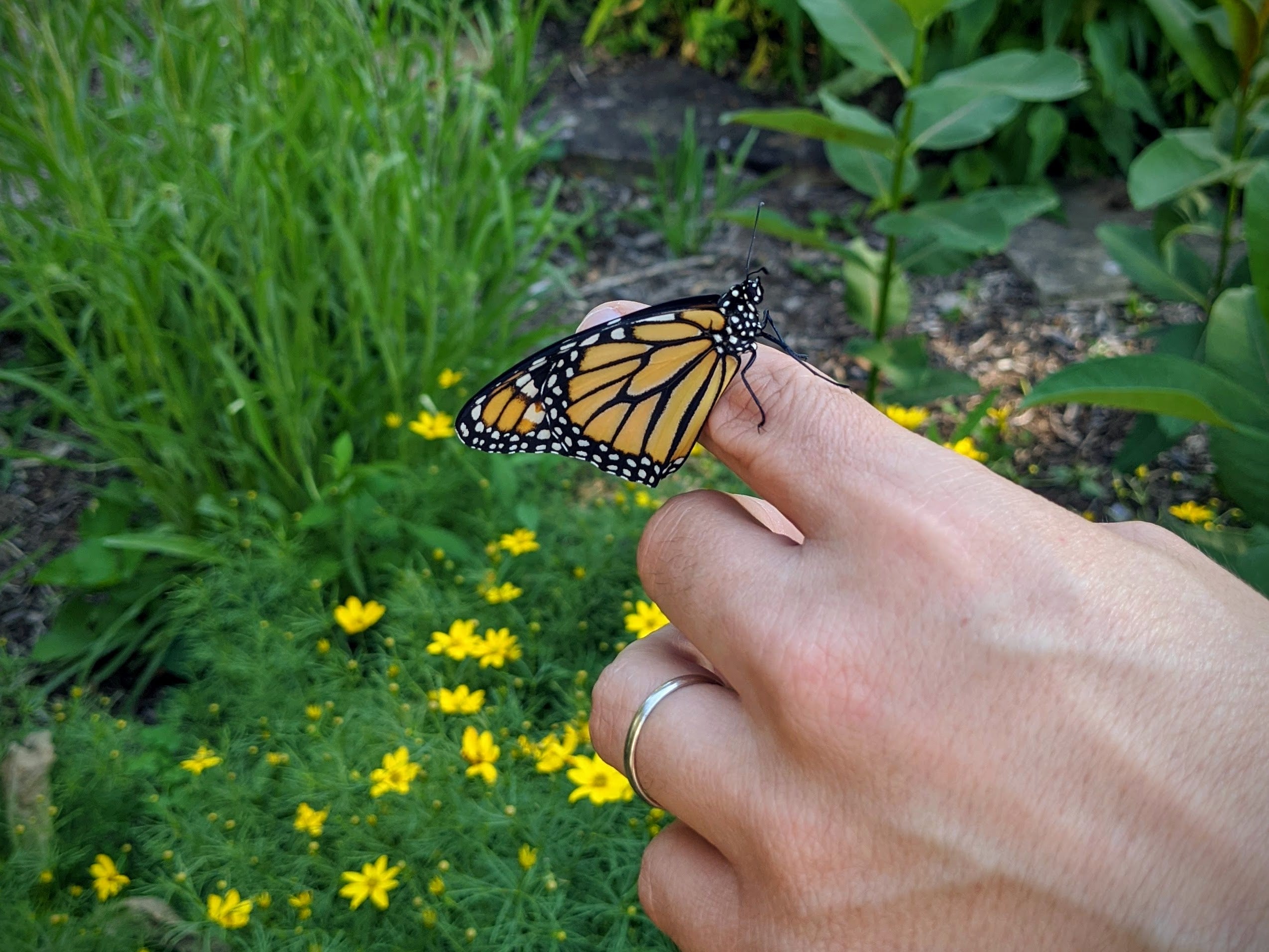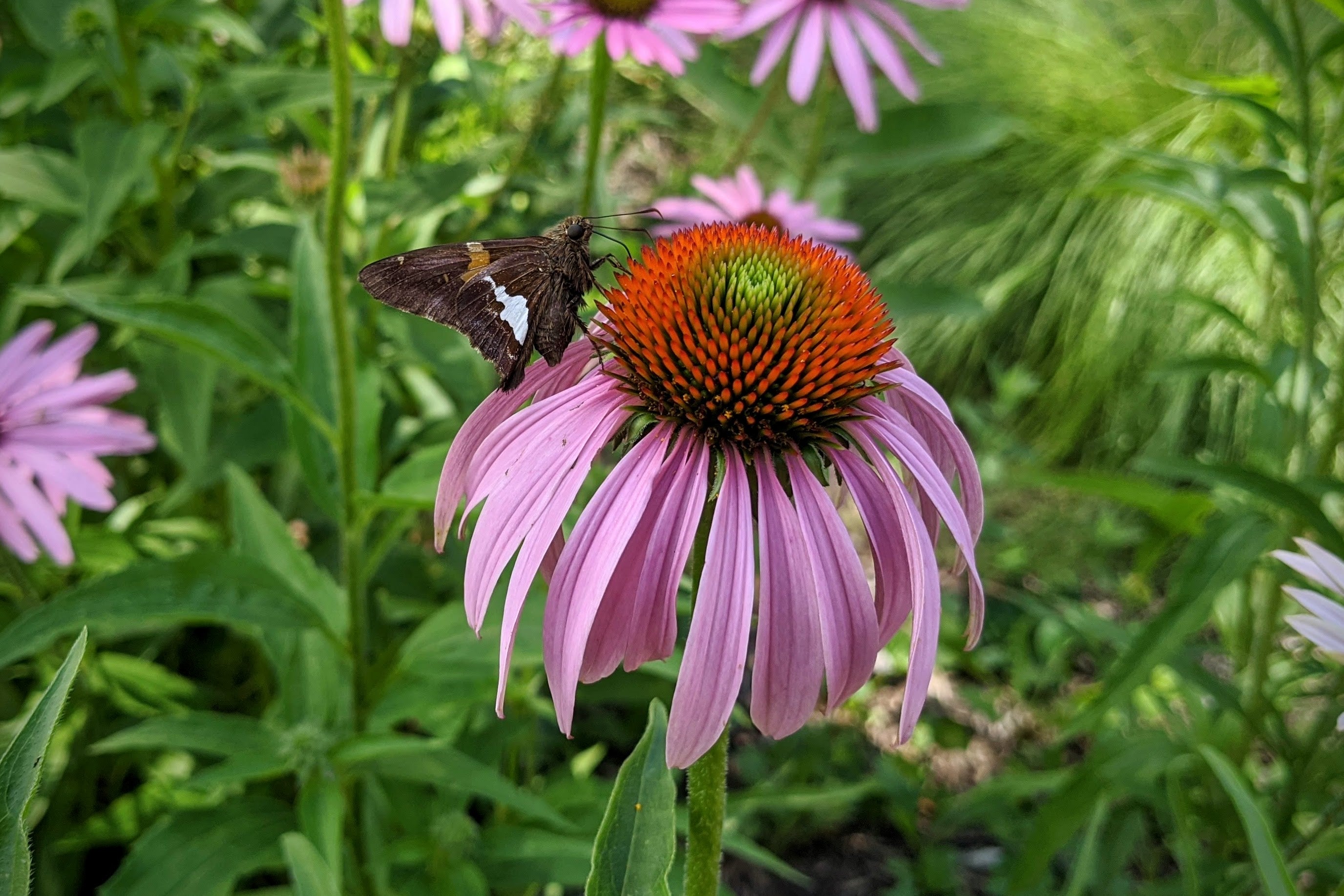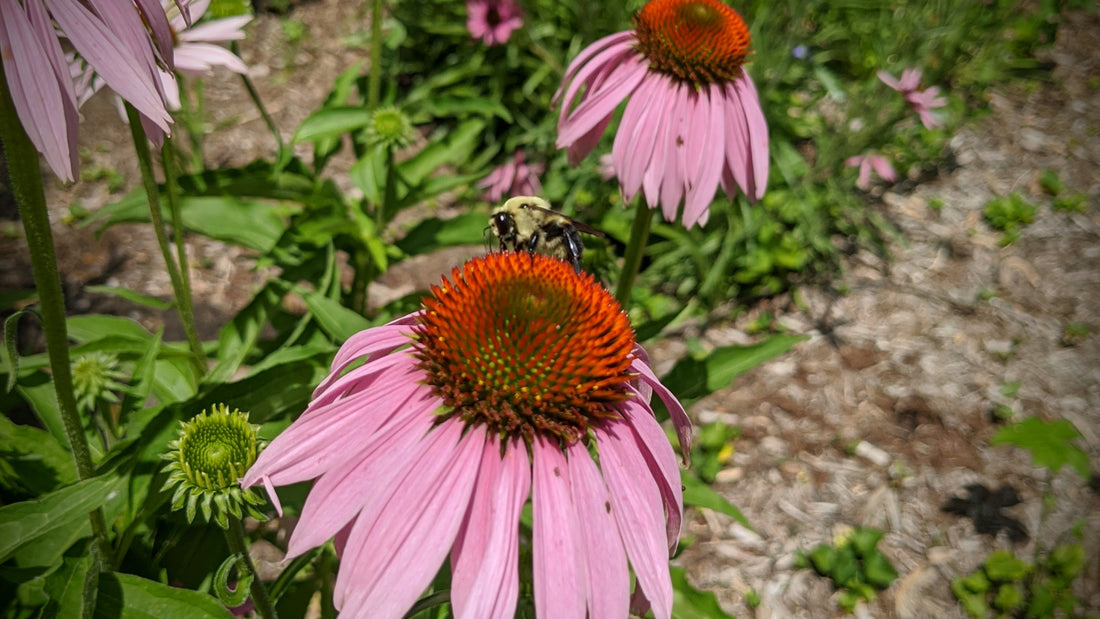The time of the spring ephemeral wildflowers has passed, but now that we're at the end of June we've enjoyed seeing the stalwart summer flowers of our garden come into bloom. During the winter months we miss the insects who dwell in our yard, so this month, we'll take a moment to appreciate them!
Shiny green sweat bees are a favorite of ours, and we're grateful that they live with us all summer long. Right now, our coneflowers are abuzz with them. The one in this picture, with its striped abdomen, is an Agapostemon, but we also see many of the smaller Augochlora and Augochlorella sweat bees who wear their green head-to-stinger.

A green Agapostemon sweat bee dines on a Tennessee coneflower.
Our native species like sweat bees are very important, but we're also happy to be visited by domestic honeybees. Here's one enjoying the sweet nectar of spider milkweed, a unique low-growing milkweed. Since honeybees typically forage within a two mile radius, we like to think that some of those who we see in our yard have come from the hive at the Wonderlab children's museum.

A honeybee enjoys the nectar of green spider milkweed (with a homemade insect oasis in the background).
Of course, you can't bring up milkweed without thinking of their most famous beneficiaries: monarch butterflies. During late May and early June, we had a new crop of caterpillars in our garden. We brought one onto our screened porch to watch her metamorphosis. After she eclosed from her chrysalis, we took her to the front garden for her first nectar meal, and watched her fly away to bring the next generation into the world.

This female monarch butterfly, perched on David's hand, gets ready to explore the world.
Another common, but no less beautiful, butterfly of our gardens is the silver-spotted skipper. While they'll spook easily, we've found them to be much less skittish photography subjects than many other butterflies. Those flashes of white and subtle glittery golden highlights are so gorgeous (no wonder we paid tribute to it as a screen print).

A silver-spotted skipper butterfly nectars on purple coneflower.
In addition to the pollinators, one sign of a healthy ecosystem is to have abundant predators. So we are happy to host them as well. We haven't spotted any crab spiders yet, even though we're sure they're around. But we have seen the well-camouflaged ambush bugs a few times, and we're very excited to have had a native Carolina mantis leave her egg case on our porch last fall. We've found one of her youngsters already!

Head pointed down, an ambush bug poses on the stem of common milkweed.

A false sunflower is the perfect perch for this wee mantis.
We feel so fortunate to have a yard where we can cultivate habitat for so many different insects! We'll be the first to admit that we don't have the tidiest garden around, but when we're outside enjoying the scent of milkweed flowers on the breeze, watching bumblebees and beetles and moths go about their day's labor, we think we must be doing something right.

